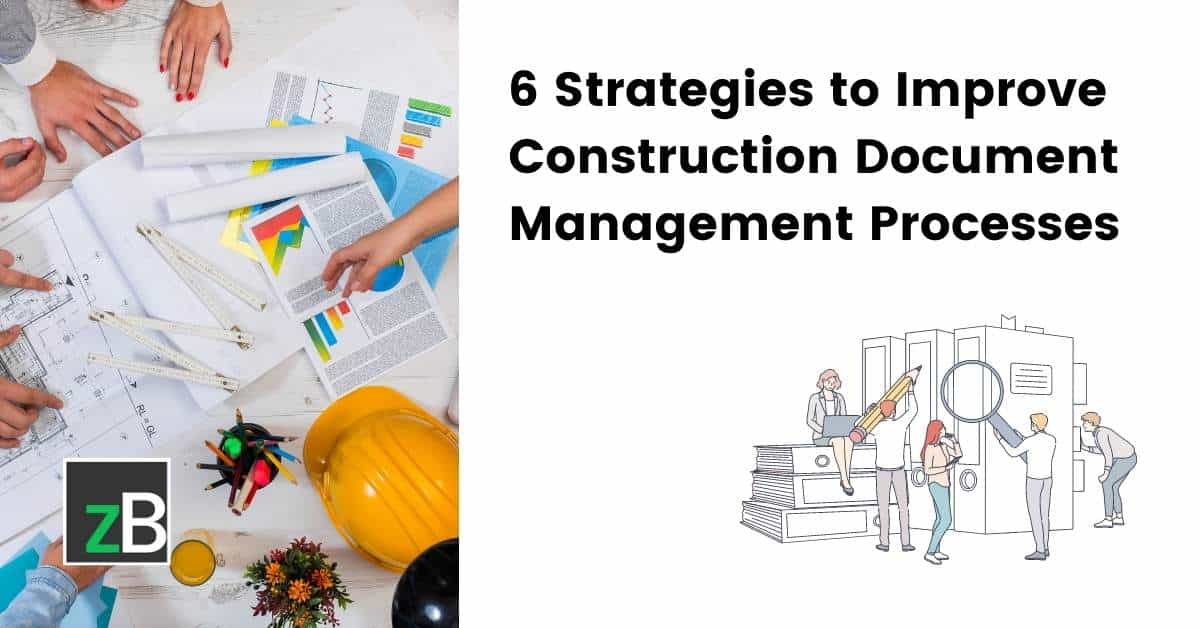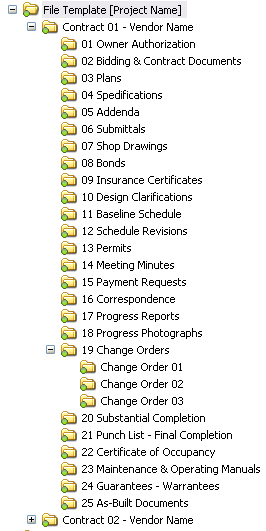Navigating Intricacy: Exactly How Construction Document Management Software Program Can Assist
Optimizing Job Collaboration: Designer's Finest Practices in Building Document Administration
In the elaborate world of architectural projects, the efficient monitoring of building records stands as a foundation for success. Designers, with their thorough attention to information and cutting-edge style services, are charged with coordinating a symphony of stakeholders, timelines, and sources. In the middle of this intricacy exists an important question: just how can engineers simplify collaboration procedures to improve job end results? By discovering vital approaches such as leveraging cloud-based systems, establishing robust interaction procedures, and guaranteeing data security, designers can boost their document monitoring practices to new heights.
Leveraging Cloud-Based Platforms
By transitioning from standard paper-based systems to cloud solutions, architects can simplify collaboration, boost file access, and enhance general task performance. This availability advertises smooth communication and control among project stakeholders, leading to less errors and hold-ups in the building and construction procedure.
Additionally, cloud-based platforms provide a safe setting for storing sensitive project info, supplying encryption, normal backups, and user approval setups to secure data stability. Architects can also profit from the scalability of cloud services, permitting them to change storage ability and performance based on project demands. On the whole, leveraging cloud-based platforms encourages designers to enhance their construction record administration procedures, driving greater cooperation, effectiveness, and success in their tasks.
Carrying Out Variation Control Systems
Having actually established the benefits of cloud-based systems in construction paper management, architects can currently enhance their document control procedures by carrying out Version Control Systems. Version Control Equipment (VCS) are necessary tools that track modifications in records, making sure that employee are always dealing with the current and most precise information. By implementing VCS, architects can maintain a central database where all project files are stored, enabling smooth collaboration while lessening the threat of errors and version disputes.
This attribute is particularly valuable in building tasks where layout iterations and modifications are usual. This openness not just boosts responsibility however likewise helps in settling conflicts or disparities that might arise during the project lifecycle.
Developing Interaction Procedures
To make sure efficient and efficient job control, architects must establish clear and robust interaction protocols within their construction file management procedures. This platform can be a project management software program, email threads, or cloud-based storage options.
Additionally, communication protocols should additionally include standards on just how to handle disputes, adjustment orders, and immediate problems that might arise throughout the job lifecycle. Establishing a structured approach to communication makes certain that all stakeholders are on the very same page, promotes openness, and ultimately contributes to the effective conclusion of the construction project.
Utilizing BIM Software Program for Control
BIM software plays an essential role in enhancing control amongst task group participants in the building market. Structure Details Modeling (BIM) facilitates collaboration by supplying a centralized platform where engineers, engineers, specialists, and other stakeholders can interact in a worked with fashion. Through BIM software program, task individuals can access and update a common version that has thorough information about the building layout, building and construction parts, and job timetables.

In addition, BIM software application makes it possible for real-time collaboration and communication amongst staff member, regardless of their physical area. Via cloud-based BIM platforms, task stakeholders can access the latest job information, track adjustments, and make educated decisions immediately. Generally, leveraging BIM software program for coordination enhances project performance, productivity, and inevitably brings about successful job end results.
Ensuring Information Security and Conformity
In the realm of construction record management, protecting data honesty and ensuring regulatory compliance are paramount factors to consider for designers and other task stakeholders. Designers need to apply durable safety steps to safeguard delicate task information from unapproved access or breaches.

Conclusion
In final thought, architects can maximize job cooperation in building and construction paper management by leveraging cloud-based systems, applying variation control systems, establishing interaction procedures, utilizing BIM software program for coordination, and making sure data protection and conformity. These best methods help improve the construction procedure, enhance communication among task stakeholders, and enhance efficiency in project delivery. By following these guidelines, architects can successfully manage construction documents and promote successful project end results.
With BIM software, job participants can access and update a common version that has detailed information about the structure layout, building and construction components, and job schedules.
With cloud-based BIM platforms, project stakeholders can access the most current task info, track modifications, and make notified choices without delay - construction document management. click this Generally, leveraging BIM software program for sychronisation boosts job effectiveness, efficiency, and eventually leads to effective job results
In final thought, designers can maximize project partnership in building and construction document monitoring by leveraging cloud-based systems, carrying out variation control systems, establishing communication methods, using BIM software for coordination, and making certain information security and compliance. These finest practices help improve the construction process, boost communication among task stakeholders, and enhance efficiency in task published here shipment.